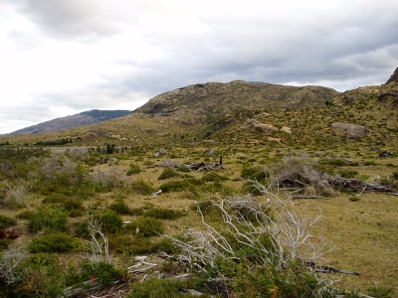



The ruined nature of the valley
The modern natural history of the area where the project is located is the history of anthropogenic stresses and destructions,
of a large silenced ecological tragedy at the scale of a geographical region,
one of the largest in the XX century
Fifth law of ecology: “Truth liberates”.
In the project:
The land is extremely degraded, the original, mainly ancient irreplaceable forest ecosystem, is destroyed. In some parts it was degraded beyond repair, crossed biotic and abiotic thresholds. In other places it has not reached the point of no-return. In both cases a novel ecosystem is being created. That’s the reason for establishing a nature protected area there, in order to rehabilitate the biocenosis as close as possible to the destroyed one, and use the area as a showcase for anthropogenic Nature degradation and collapsed ecosystem.
The extreme degradation of land and the destruction of the original forest ecosystem is the result of recent (first part of XX century) colonisation, introduced by it practices of land management and agriculture (1930s-1940s in the valley), subsequent deliberate fires, followed by overgrazing by sheep and cattle and extensive hunting of native wildlife. There is heavy erosion in some areas, and acute soil loss in some of the higher areas and slopes. Invasive species such as Rosa mosqueta, calafate and other woody shrubs are present mainly in areas where cattle and sheep were previously grazing.
Previously in the project’s area :
1920s-1930s – part of a large sheep station
Spring 1939 and 1955 – deliberate clearing fires of the ancient forest (almost all burned)
1940s-2000s – intensive and uncontrolled cattle grazing (less than region average though)
2000s – pine plantations
↓
Subsequent wash off and acute loss of soil;
Erosion, land slides, impoverishment of soil;
Invasion by neophytes (rosa rubiginosa (mosqueta), pinus contorta, European hare, etc.);
Little ecological memory in the ecosystem due to abrupt biological annihilation, absence of natural regrowth;
Rampant and acid desertification;
Original ecosystem on the verge of collapse or collapsed; Patagonia on fire (Spanish).pdf
Creation of a novel ecosystem.
Some parts of the regional ecosystem are probably in positive feedback, it is not fortunately not the case of the project’s land.
The valley is a good representation of the future of the large areas burned in the world in 2019-2020.
Globally ecosystems are different, but their degradation mainly take the same path.
An economically underdeveloped area does not always mean “pristine nature”.
To have an idea of the ecosystem of the valley before the first deliberate fire lit in 1939 you have to imagine the landscapes below with a 2 m additional fertile soil covering the rocks on hills, on which grows an ancient forest of the type of trees on the photos below and wildlife we can not imagine as virtually no information on it was collected before the disaster :
Project’s land avoided extensive pampanisation (= rampant desertification), which is not the case of some other parts of the region. Project’s area has experienced limited number of cattle. Some very small pockets of original forest remain, some few wetlands remained untouched.
Pine plantations (neophytes from Northern hemisphere) constitute approx. 450 ha in the project, including the very invasive Pinus contorta. These added to the destruction of the original forest ecosystem, produced acidification of soil (acid desertification) and monoculture (≠ biodiversity).
The region:
More or less the same situation is found in the region XI:
Nature and land of the region were severely degraded by the
deliberate fires as from the beginning of the last (XX) century,
subsequent impact of agriculture (mainly cattle), intensive hunting
(of carnivores and herbivores) and intensive forestry exploitation,
resulting in ecosystem degradation at large scale and visible collapse
in some areas. The speed of the ecological disaster did not allow to
preserve ecological memory or potential for recovery.
The level of nature destruction is, probably, comparable to the actual level
of the annihilation of the Amazon ecosystem. Contribution of the region
to the positive feedback of Earth ecosystems and recent health crisis:
Such levels of destruction of the natural world
lead to global epidemics and crises. 90% of deforestation in the Amazon
region is due to meat production.
The recently (last 80 years) imported culture of cattle management,
irresponsible towards the land and brutal to
the farm and wild animals, has been one of the main causes of
reaching the irreversible devastation of the nature of the region.
The picture you see on the slopes in the region
or of open areas (= pampanisation) is a result of these processes →
The remains of the local wildlife, like huemules and pumas,
were hunted almost to extinction. The introduction of salmonidae
in the lakes has altered the food chain of the local otters (Lontra provocax) and other wildlife.
Continued modern ecological disaster: A cry in Patagonia.
Destruction of world's forests increased sharply in 2020 ; Just 3% of world’s ecosystems remain intact.
Read more on page Publications.
“Because Patagonia has so many recent immigrants, people are often undereducated about the wildlife and indifferent to its existence. There is little indigenous culture left (in the case of the Project’s area - none), no gift of traditional ecological knowledge learned through experience by people who have lived there for centuries. Loyalty to the native wildlife and ecosystems is not common in the Southern Cone”. “Act III in Patagonia, People and Wildlife”, William Conway.
Current additional anthropogenic threats for the protective activities of the project:
I. Third-party productive projects:
Tourism: local pattern of small scale tourism development = lack of control and responsibility, opportunistic, source of pollution, severe impact on the glaciers, changes in consumption models involving use of imported junk-food products, important increase of wastes. Increase of visitors (tourists) in SNASPE (Sistema Nacional de Áreas Silvestres Protegidas del Estado) leads to serious stress for other protected areas;
Cattle: local cattle management practices → physical destruction
of the reforested areas, spreading of the invasive rosa mosqueta,
chemical water pollution, chemical soil pollution and
soil microbiota deterioration;
Fish farming - chemical water pollution, denatured salmon
escaping into the natural waterflows → contamination of water
and disappearance of local water species.
II. Regional:
1. Subsidies for:
-
-firewood - firewood heating and cooking in the area is one of the
main sources of atmospheric pollution in the region, the capital
Coyhaique at times in winter is identified as the worst polluted
town in the world of the day;
- wetlands draining, applied to watershed shared with the project’s land.
-
2.Absence of waste management in the region → soil and atmospheric pollution.
-
3.Weak management plan implementation in the neighbouring biosphere reserve - national park Laguna San Rafael.
4. Illegal logging, in particular of cypress.
Report 2020: Megaprojects risk pushing forests past tipping point
III. Climate alterations:
Climate change and the anthropogenic destruction of the ecosystem work in positive feedback in the area, heavily influenced by the fast changing glaciers. Glacier Leones, feeding the river of the valley where the project is located, is melting at hight speed: the ground around it is rising very fast - 19.4 mm per year (data 2017), this rapid rise is due to significant ice loss.
Examples of climate change influence in the Project:
- Collapse of a lake moraine in 2000 in the valley.
- Increase of the CO2 in atmosphere → the grass-dominated peatbog in the project is invaded by trees.
Reading: research that shows that ecosystems move 20 cm per hour North and South, and 11 cm in altitude, due to climate change - Rapid Range Shifts of Species.pdf.
-
IV.Speed and constant acceleration of climate and human social structure changes.
4th law of ecology: “There is no such a thing as free lunch”.
Exploitation of nature will inevitably involve the conversion of resources from useful to useless forms.
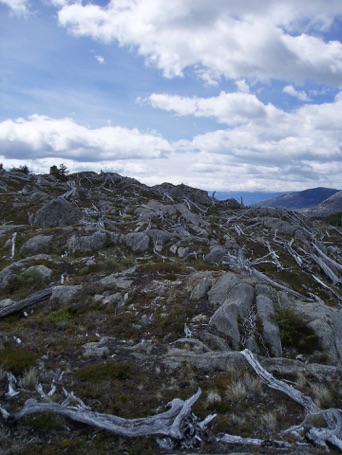

Lengua beech burned in 1939
Burned Lengua (Nothofagus pumilio) with approximate level of soil cover prior to the fire (black line) →
Remains of the primary forest burned in the first part of the XX century
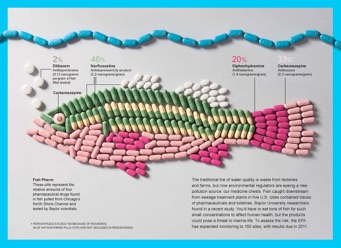

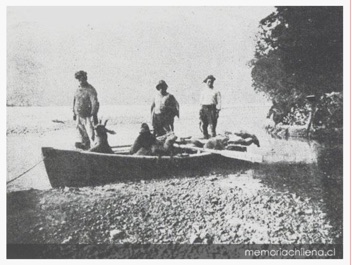
Huemules hunt, Baker river
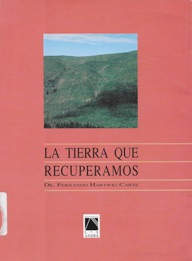
p.149 :”.. the region of Aisen, one of those that has suffered the greatest deforestation in Chile since the Twenties...”

It was a underestimated start of a general global trend:
Amazon near tipping point of switching from rainforest to savannah – study
Fifth of countries at risk of ecosystem collapse
These last years will remain in history as time when humanity consumed the Earth.
A dead valley
